Discover the Magic of Vegan Leather: Eco-Friendly Fashion Revolutionized!
Are you looking for fashion alternatives that don’t harm animals and might be better for the planet? The rise of vegan leather could be the solution we’ve been waiting for. This article unpacks what vegan leather is, its sustainability and a closer look at various types of this animal-free material.
Curious? Let’s dive in to discover if vegan leather really holds up to both ethical and sustainable standards.
What is Vegan Leather?
Vegan leather, also known as synthetic or faux leather, is a type of material designed to mimic the look and feel of real leather without using any animal products.
Definition and composition

Vegan leather is a kind of fake leather. It does not use cow hides or any other part of an animal. There are two main types of vegan leather. Some are made from plants like cork, kelp, and pineapple leaves.
Others come from plastics such as PVC and polyurethane, which can be harmful to our planet. PIñatex pineapple leather feels soft and tough like real leather but comes from plant waste, not animals.
Real-looking faux (fake) hide that holds up well over time can be created with these materials without hurting cows or other livestock.
Vegan leather vs real leather

Vegan leather and real leather have key differences in their composition, sustainability, and ethics.
| Vegan Leather | Real Leather | |
|---|---|---|
| Composition | Vegan leather can be made from a variety of materials, including polyurethane, cork, and plant-based substances like pineapple and mushroom fibers. | Real leather is made from animal hides, primarily cows, but also pigs, goats, sheep, and alligators. |
| Sustainability | The sustainability of vegan leather depends on the materials and manufacturing process used. Plastic-based vegan leathers, such as polyurethane, are not biodegradable and can release microplastics into waterways. However, plant-based vegan leathers can be more sustainable and environmentally friendly. | Leather is biodegradable and can be treated with natural vegetable tannins. However, the leather industry contributes to deforestation and climate change due to the methane emissions from livestock. |
| Ethics | Vegan leather is cruelty-free and does not involve the use of animals, making it a more ethical alternative for those concerned about animal welfare. | Over a billion animals are used in the leather industry annually, raising significant ethical concerns regarding animal welfare and exploitation. |
| Durability and Quality | The quality and durability of vegan leather can vary depending on the materials used. Some vegan leathers, particularly those made from synthetic materials, may not be as durable as real leather. | Real leather is known for its durability and quality, often lasting for many years with proper care. |
Sustainability of Vegan Leather

Vegan leather offers a more sustainable alternative to real leather, with lower environmental impact and greater potential for biodegradability and recyclability.
Environmental impact

Vegan leather changes our world in many ways. It is not the same as real leather. Some vegan leathers can hurt the earth because they are made from plastic. Plastic makes tiny pieces called microplastics that go into water when it breaks down.
On the other hand, some types of vegan leather come from plants and do less harm to our planet. Plant-based vegan leathers don’t create microplastics. This type of vegan leather is better for the earth than plastic-based ones.
Biodegradability and recyclability
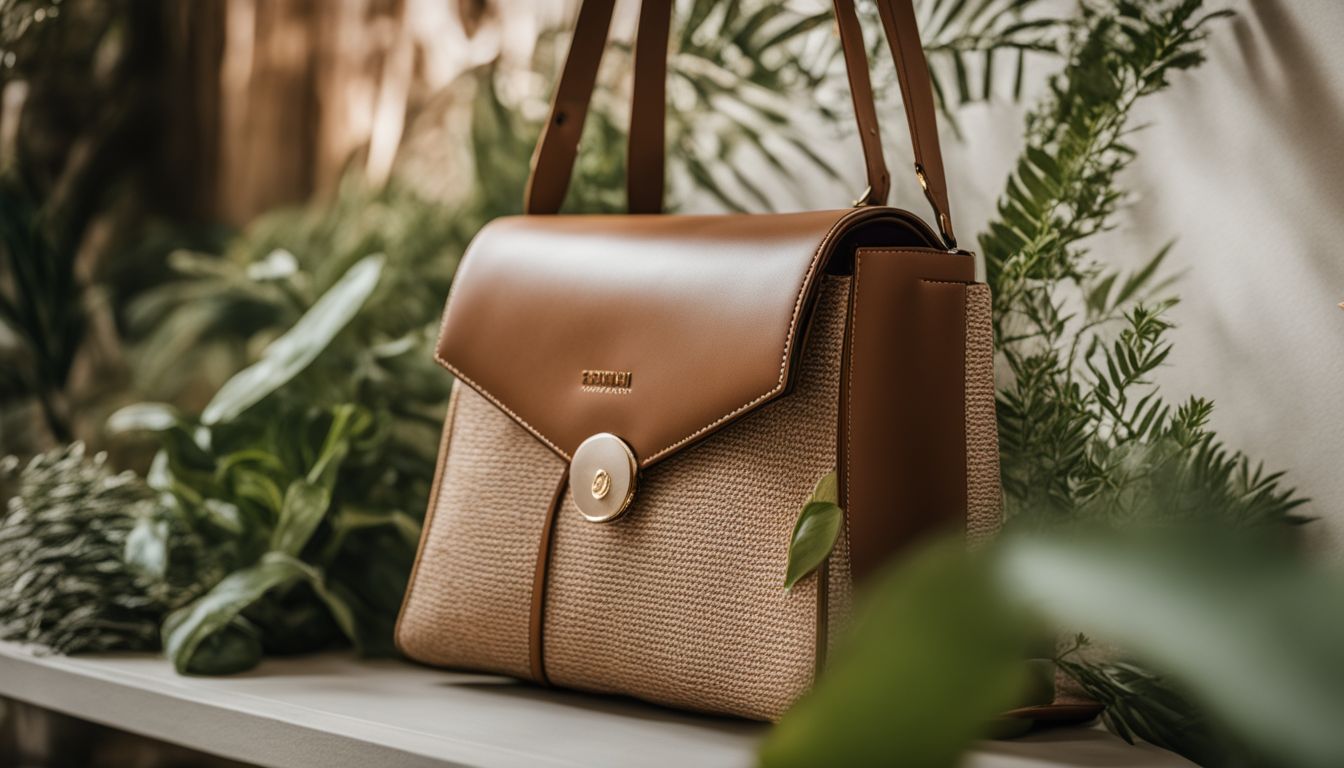
Vegan leather’s biodegradability and recyclability depend on the materials used. Some vegan leathers made from plastic, like polyurethane (PU) leather, are not biodegradable and can release harmful microplastics into waterways.
On the other hand, plant-based vegan leathers treated with natural vegetable tannins are biodegradable and can be easily discarded at the end of their life cycle. This makes them more environmentally friendly compared to plastic-based alternatives.
When it comes to recyclability, some types of vegan leather can be recycled, while others cannot due to their composition. It is important to consider the specific material and production methods when evaluating the sustainability of vegan leather.
Comparison to real leather
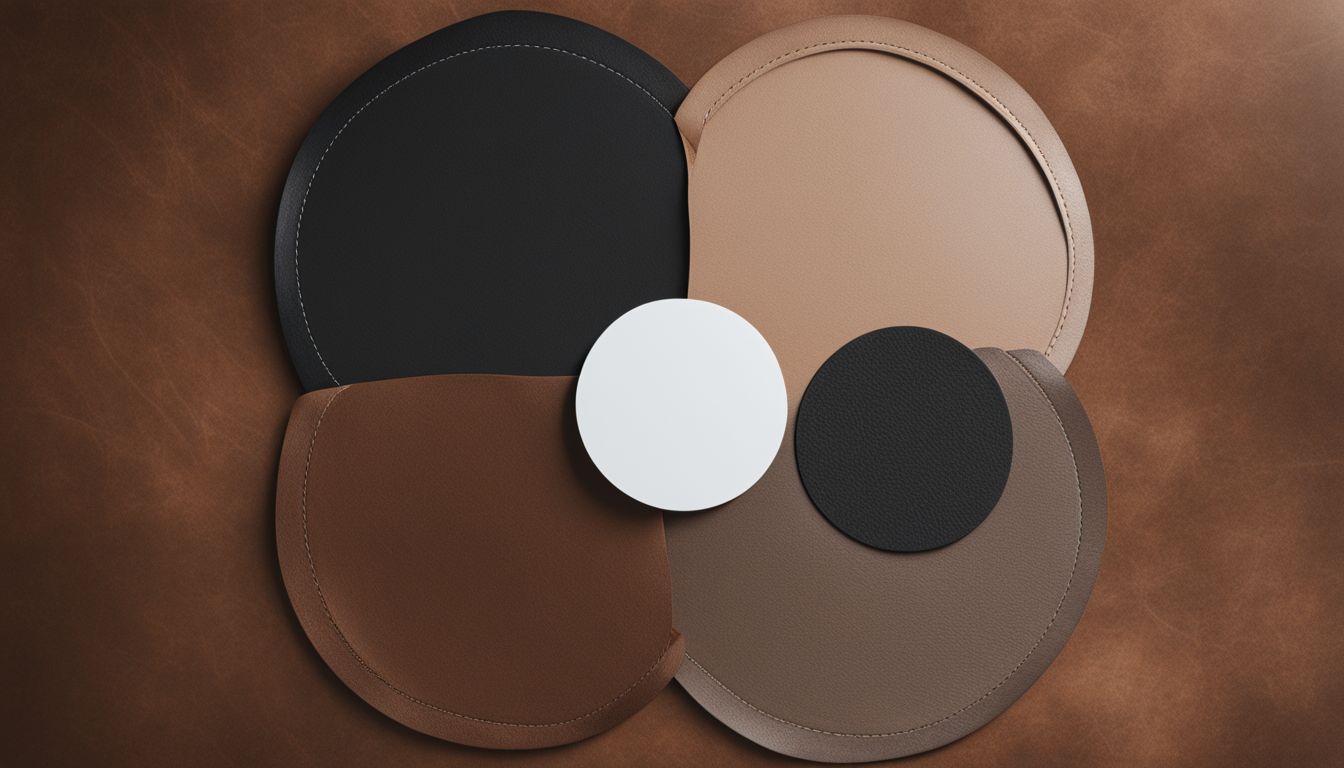
In this section, we will compare the sustainability and attributes of vegan leather to that of real leather.
| Vegan Leather | Real Leather | |
|---|---|---|
| Sustainability | Depends on the materials and manufacturing processes used. Vegan leather made from plastic is less sustainable and releases microplastics into waterways. | Leather products treated with natural vegetable tannins are more sustainable as they are biodegradable. |
| Impact on Animals | Does not involve the use of animals, hence it is cruelty-free. | More than a billion cows, pigs, goats, sheep, and alligators are used in the leather industry. |
| Biodegradability/Recyclability | Plastic-based vegan leathers are not biodegradable. However, some plant-based leathers, treated with tannins, can be biodegradable. | Leather products treated with natural vegetable tannins are biodegradable and can be easily discarded at the end of their natural life. |
| Quality and Durability | The quality and durability of vegan leather can vary depending on the materials and production methods used. | Real leather is known for its durability and quality. |
It’s worth noting that while vegan leather can be a more ethical alternative, its overall sustainability is dependent on the materials and manufacturing methods used in its creation.
Types of Vegan Leather

There are several types of vegan leather, including polyurethane (PU) leather, Piñatex pineapple leather, mushroom leather, and cork leather.
Polyurethane (PU) leather
-leather-6651da101d-575515410.jpg)
Polyurethane (PU) leather is one of the most common types of vegan leather. It is a plastic-based material that imitates the look and feel of real leather. However, it is important to note that PU leather is not sustainable or biodegradable.
Unlike real leather, which comes from animal hides, PU leather is made from petrochemicals. This means that its production contributes to environmental pollution and relies on non-renewable resources.
Additionally, PU leather does not break down naturally like real leather and can release harmful microplastics into waterways when it eventually degrades over time. While PU leather may be cruelty-free and offer an alternative to using animal products, it falls short in terms of sustainability compared to other options like plant-based leathers or natural vegetable-tanned leathers that are biodegradable and eco-friendly.
Piñatex pineapple leather
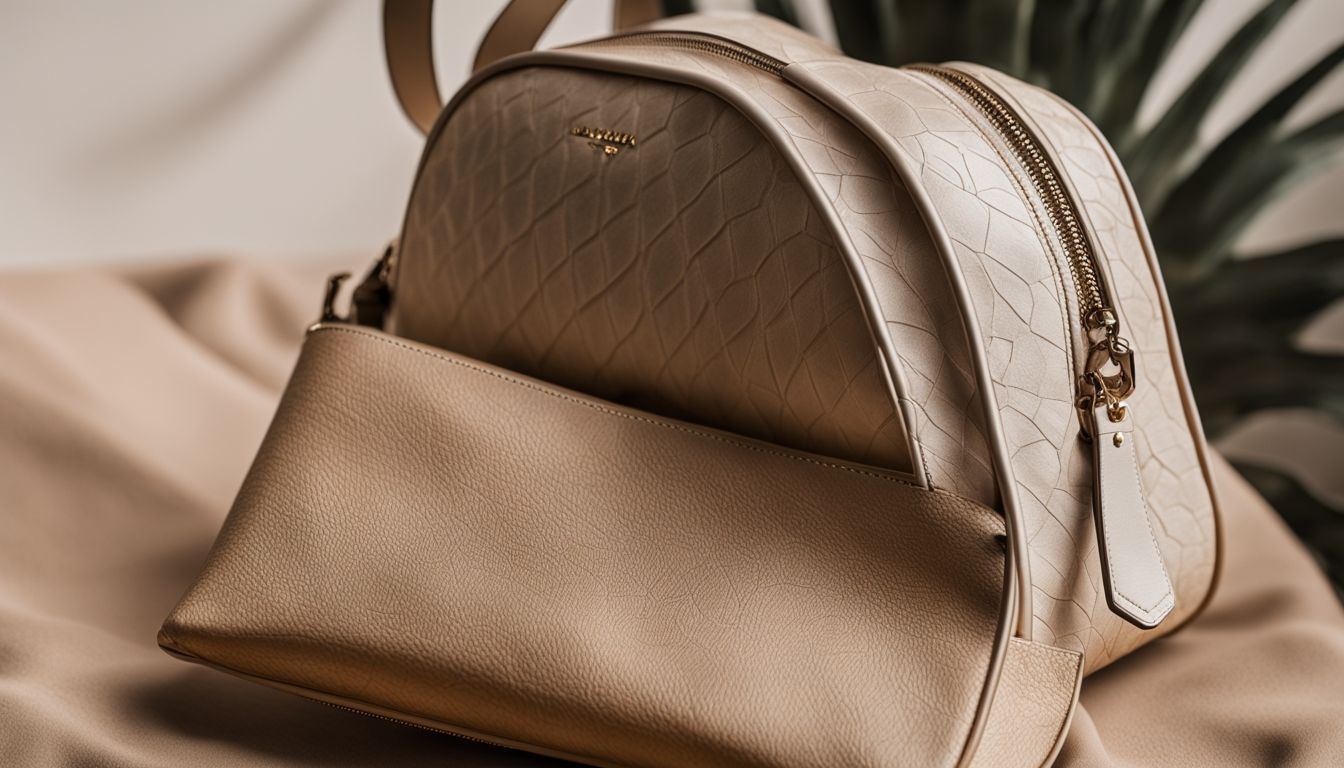
Piñatex pineapple leather is a sustainable alternative to traditional leather made from the fibers of pineapple leaves. It is an eco-friendly material that does not harm animals or contribute to deforestation.
Piñatex is biodegradable and can be easily discarded at the end of its life without harming the environment. The production of Piñatex also supports local communities and reduces waste in the pineapple industry.
While it may not be as widely available as other types of vegan leather, Piñatex is gaining popularity in the fashion industry for its sustainability and unique texture.
Mushroom leather

Mushroom leather is a type of vegan leather that is made from the roots of mushrooms. It is also known as mycelium leather. This material is created by growing mycelium, which is the vegetative part of fungi, on agricultural waste such as corn stalks or hemp fibers.
The mycelium forms a network that can be used to create a leathery texture that closely resembles animal leather. Mushroom leather is a sustainable alternative to both real and synthetic leathers because it does not involve the use of harmful chemicals or contribute to deforestation.
It is also biodegradable, meaning that it will naturally break down over time without releasing harmful microplastics into the environment. Additionally, mushroom leather has antimicrobial properties and can be waterproofed without using toxic substances.
Cork leather
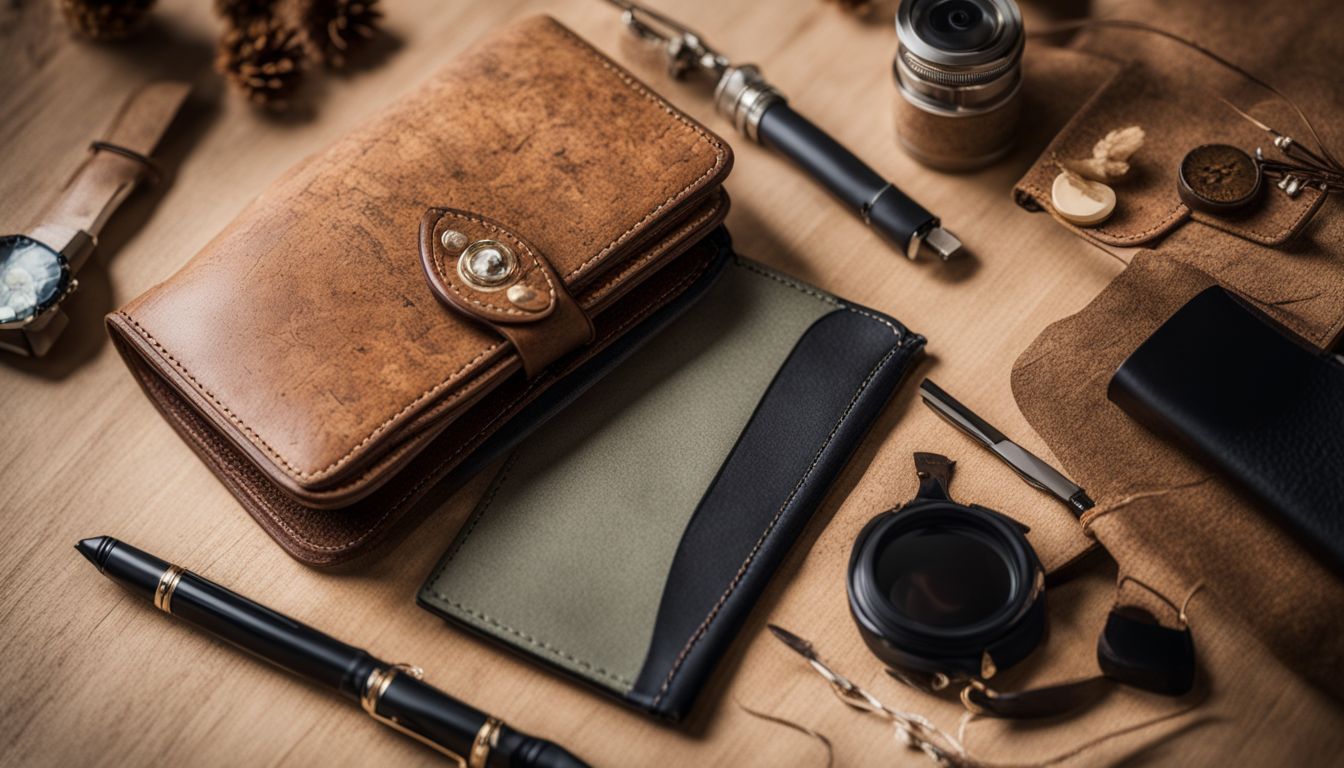
Cork leather is a sustainable and eco-friendly alternative to traditional leather. It is made from the bark of cork oak trees, which are harvested without cutting down the entire tree.
This allows the trees to regenerate and continue absorbing carbon dioxide from the atmosphere. Cork leather is highly durable, water-resistant, and has natural insulating properties.
It can be used to make various products like bags, shoes, and wallets. Cork leather is also biodegradable and recyclable, making it an excellent choice for those who prioritize sustainability in their fashion choices.
Considerations for Sustainable Vegan Leather
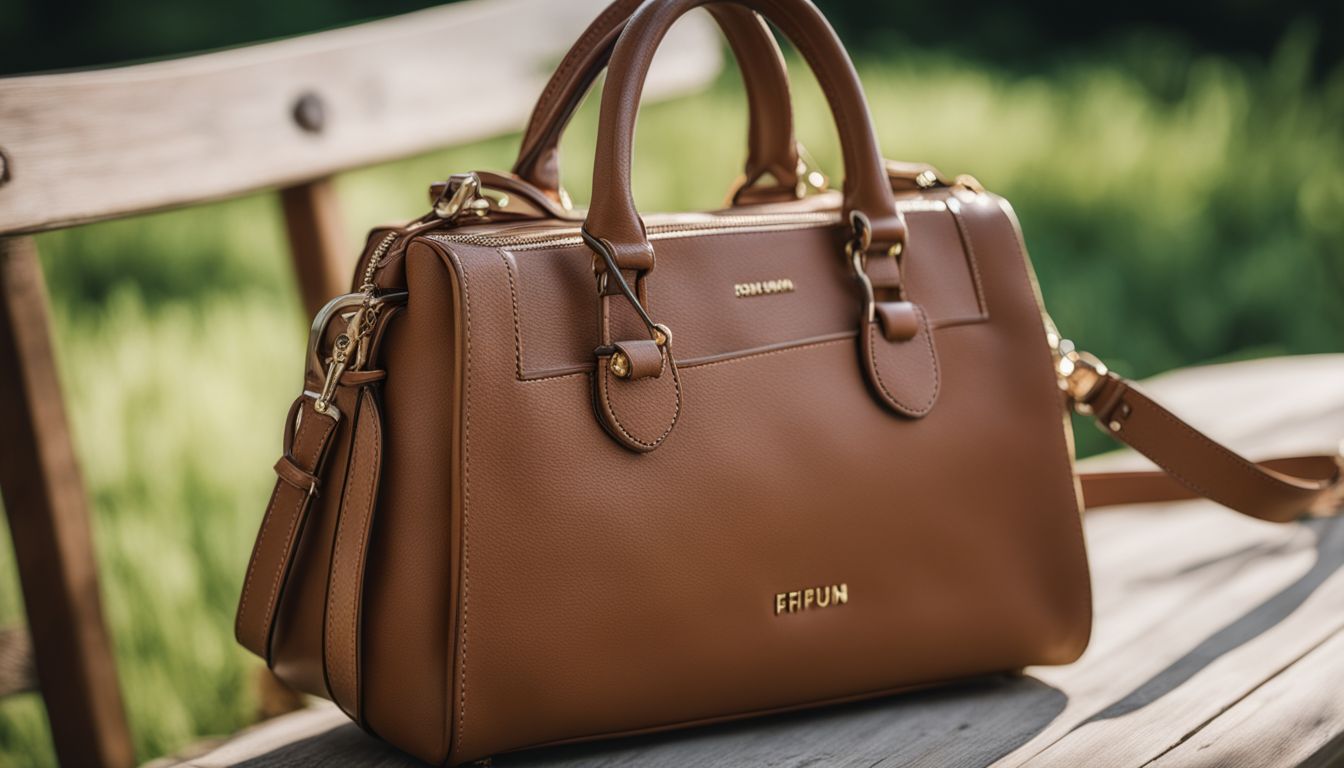
Manufacturing processes must prioritize sustainability, supply chain transparency is crucial, and social and ethical factors should be taken into account.
Manufacturing processes
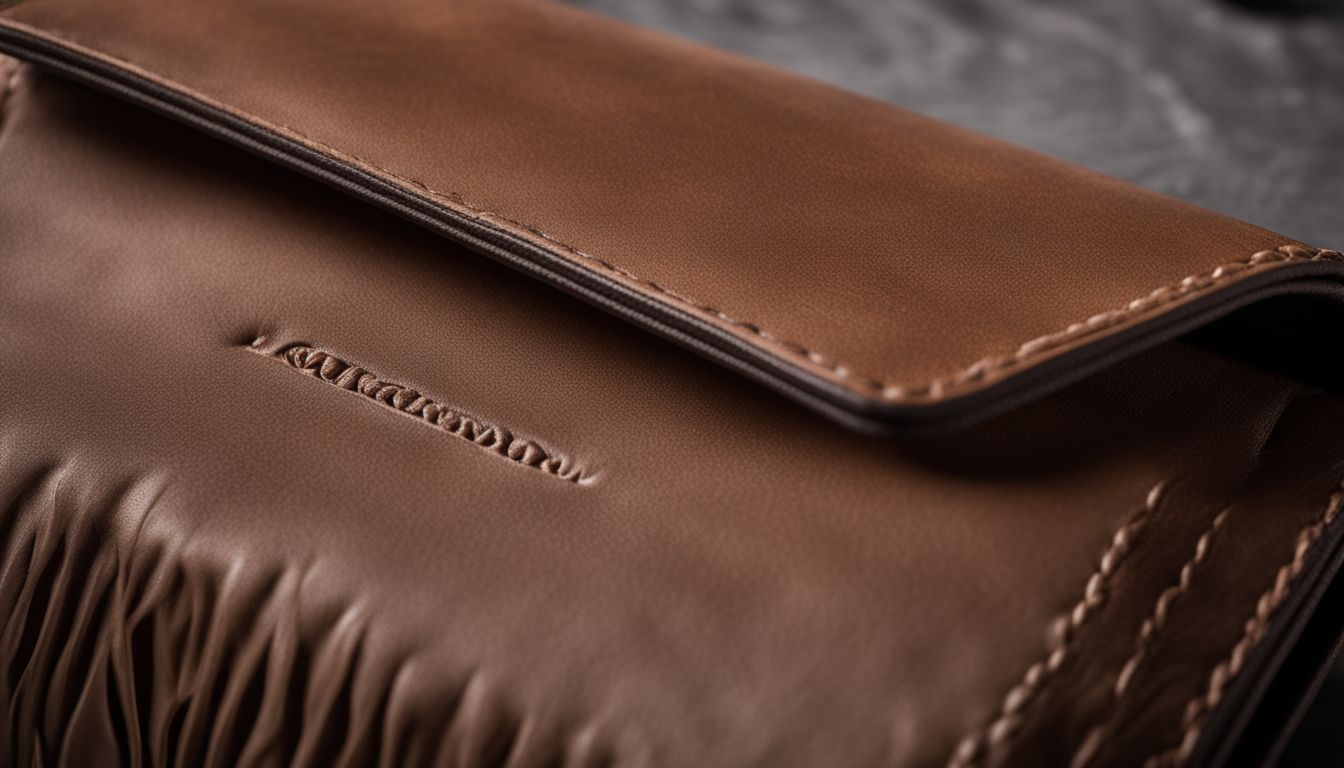
Vegan leather is manufactured using different processes, depending on the materials used. Here are some common manufacturing processes for sustainable vegan leather:
- Polyurethane (PU) leather: This is the most commonly used type of vegan leather. It is made by coating a fabric base with layers of polyurethane to create a leather-like texture.
- Piñatex pineapple leather: This innovative material is made from pineapple leaf fibers that are extracted as a byproduct of the pineapple harvesting process. The fibers are then processed and transformed into a durable and versatile leather alternative.
- Mushroom leather: Also known as mycelium leather, this type of vegan leather is made by growing mushroom cells on a substrate composed of agricultural waste. The resulting material can be processed and treated to create a strong and flexible alternative to animal-based leather.
- Cork leather: Cork is harvested from the bark of cork oak trees without harming the tree itself. It is then processed and compressed to create a textured material that can be used as an eco-friendly alternative to traditional leather.
Supply chain transparency

Supply chain transparency is an important consideration when it comes to sustainable vegan leather. It involves understanding and being able to trace the entire journey of materials used in the production of vegan leather, from sourcing to manufacturing.
Transparent supply chains ensure that ethical practices are followed throughout the process and allow consumers to make informed choices about the products they purchase. This includes knowing where the raw materials come from, how they were harvested or produced, and whether fair labor practices were observed.
By promoting supply chain transparency, we can support brands that prioritize sustainability and contribute to a more ethical fashion industry.
Social and ethical factors

Vegan leather is often considered to be a more ethical alternative to real leather. This is because the production of real leather involves the use of animals, including cows, pigs, goats, sheep, and alligators.
More than a billion of these animals are used in the leather industry each year. In contrast, vegan leather does not involve any animal cruelty or exploitation. By choosing vegan leather products, individuals can support a more compassionate and humane fashion industry.
Furthermore, social factors come into play when considering vegan leather as well. With the increasing awareness about environmental issues and animal welfare, many consumers are demanding ethical fashion choices.
Adopting vegan leather not only aligns with their personal values but also sends a message that they prioritize sustainability and responsibility in their purchasing decisions. As more people choose sustainable alternatives like vegan leather over traditional materials derived from animals, it encourages companies to shift towards more ethical practices throughout their supply chains.
Overall, by opting for vegan leather instead of real animal-derived leather products, individuals can make a positive impact on both social aspects (animal welfare) and ethical considerations within the fashion industry while contributing to creating a more sustainable future for our planet.
Conclusion

In conclusion, vegan leather offers a cruelty-free alternative to real leather and can be more sustainable when made from plant-based materials. However, the sustainability of vegan leather depends on the production methods used and whether it is biodegradable or made from plastic-based materials.
It is important for consumers to consider the environmental impact and ethical factors when choosing their leather alternatives.
FAQs
1. What is vegan leather?
Vegan leather is a type of synthetic material that imitates the look and feel of real leather, but it is made without using any animal products.
2. Is vegan leather sustainable?
Yes, vegan leather can be more sustainable than traditional leather because it does not require raising and slaughtering animals, which reduces environmental impact. However, the sustainability of vegan leather depends on the materials used and manufacturing processes involved.
3. What are the benefits of using vegan leather?
Using vegan leather helps to reduce animal cruelty and supports ethical practices in fashion. It also avoids contributing to deforestation caused by cattle farming for traditional leather production.
4. Is there any difference in quality between vegan leather and real leather?
The quality of both types of materials can vary depending on factors like manufacturing techniques and specific brands or products. Some vegan leathers can be just as durable and stylish as real leather, while others may have differences in texture or longevity.







